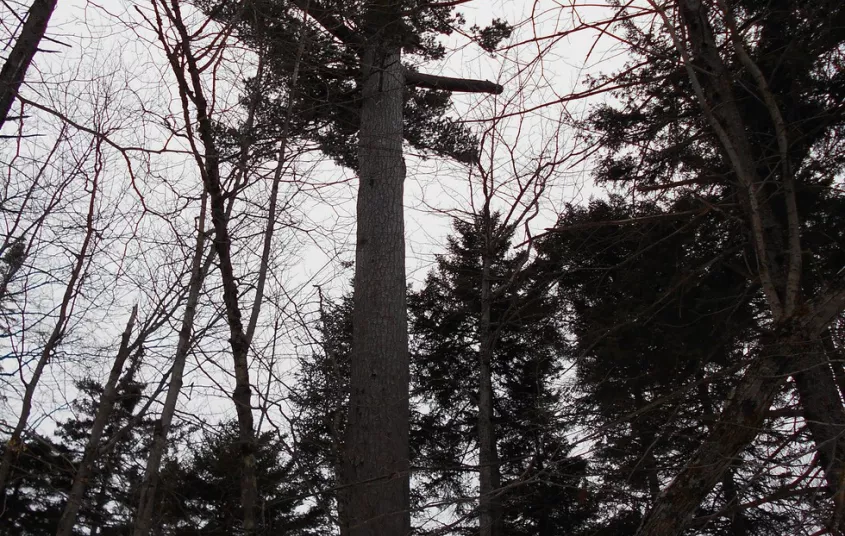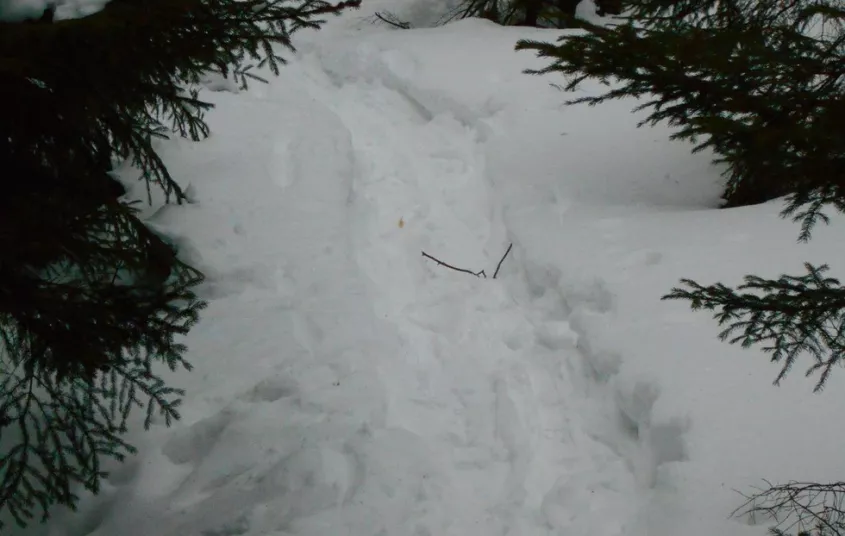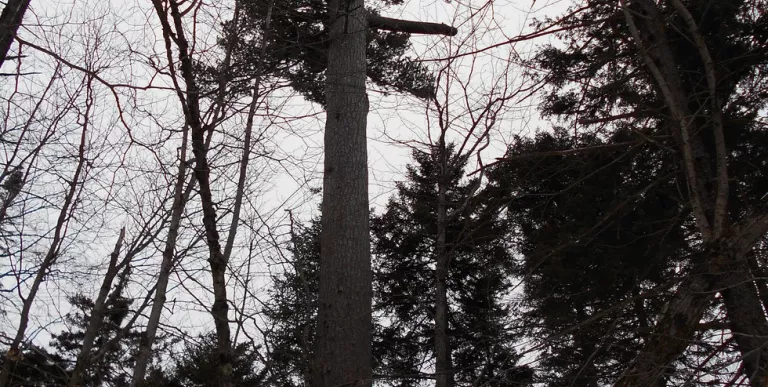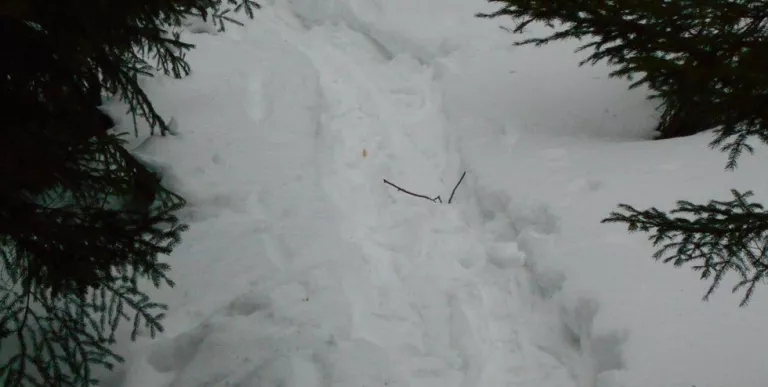


The Big Pine that is the name of the trail will be at the base of a very short spur trail on your right. It is over 140’ tall, and over 14’ in circumference. A professional guess is that this pine is around 270 years old.
Getting there
From the intersection of Route 3 and Route 30 in the Village of Tupper Lake follow Route 3 toward Cranberry Lake. Follow Route 3 for 33.4 miles to CR61 (Wanakena Road) on the left. Follow here and stay straight on the main road to South Shore Road. Follow South Shore Road for around 2 miles to the unmarked trailhead on the right. The trailhead is a bit tough to locate, but used frequently.
By the numbers
- Distance: 2.5 miles round trip
- Elevation gain/loss: about 100 feet
Hiking
From the trailhead you will be on a very flat path which is perfect for the entire family. There are only a couple very small changes in elevation and those are quite gradual. A short downhill will bring you to a small brook crossing. Past here the trail climbs a bit through some impressively tall pines.
The trail continues at the spur and eventually brings you to a small floating bog on your left. A faint herd path will bring you to the shore but be very respectful of the fragile environment. The floating bogs of the Adirondacks are very unstable. This is a neat place to visit if you want the extra distance; it lies only about a tenth mile away.
Snowshoeing & cross-country skiing
The trailhead is a bit tough to locate in winter, but used frequently. This frequent use can help you find the trailhead by locating tracks in the snow. South Shore Road is a dead end just past the trailhead, which is unmarked. A small pull-off on the right for 1-2 cars gives it away.
Birding
The bog environment is a major draw for birders. Lowland boreal communities are sources of insect life during the summer, attracting migratory birds who want to nest there, and raise their young. Palm Warblers nest in sphagnum moss and Lincoln's Sparrows in bog shrubs. Yellow-bellied Flycatchers also prefer to breed in peatlands.
Look for other bog habitat favorites like Yellow-rumped and Nashville warblers, Canada Jay, Alder Flycatchers, Northern Waterthrush, Cedar Waxwings, and Black-backed Woodpeckers.


- https://www.dec.ny.gov/lands/34715.html
Packages and Promotions
Valid Apr. 4 - Apr. 8
Valid Mar. 24 - Apr. 8
Farm Fresh Buffet & Salad Bar Meal Reservations for Eclipse
ADK Food Hub
Full Buffet with hot offerings from the farm... pastured and organically fed pork and beef & Salad Bar chili, nachos, homemade breads, soup, etc... with a strong focus on delicious, fresh, local, organic and healthy